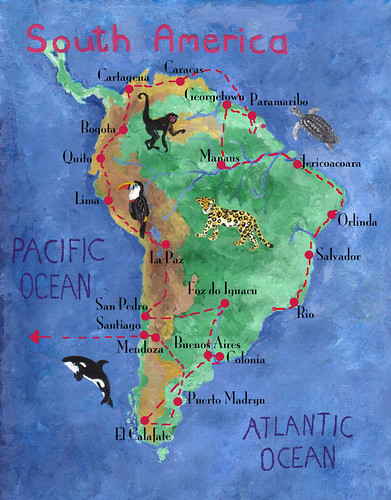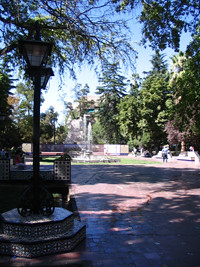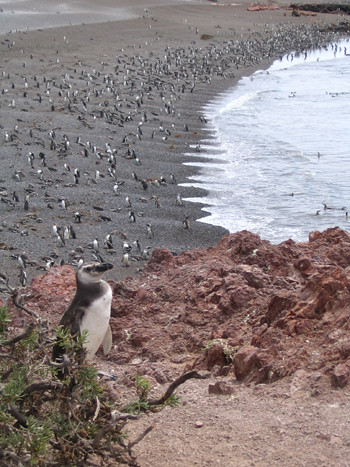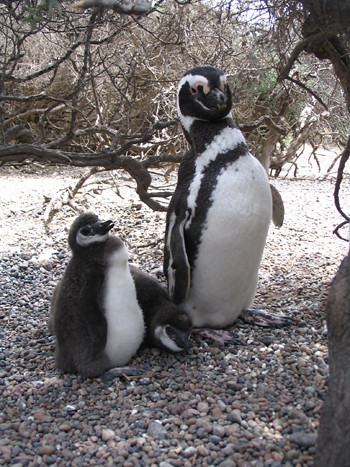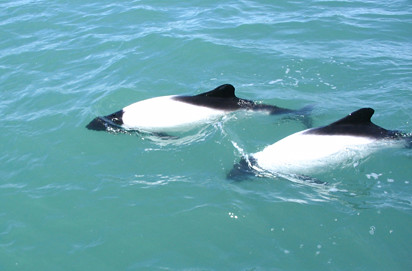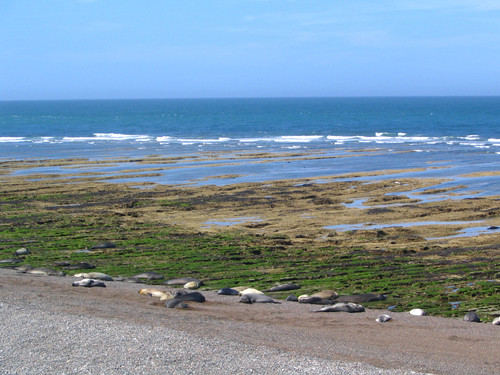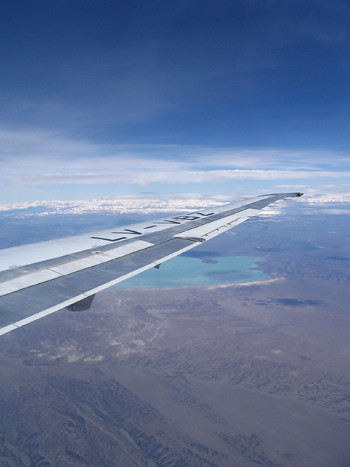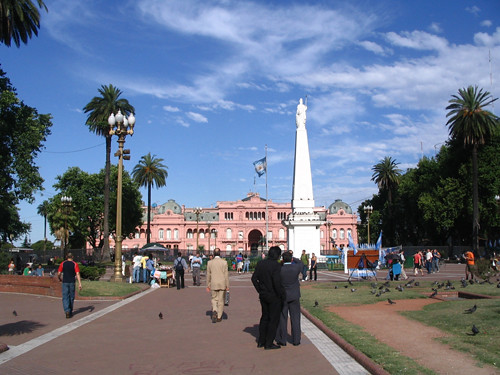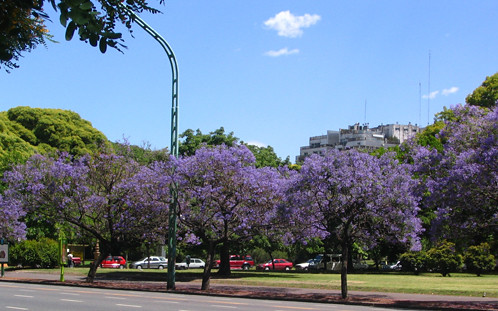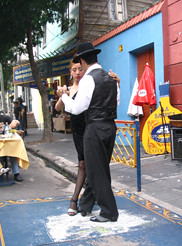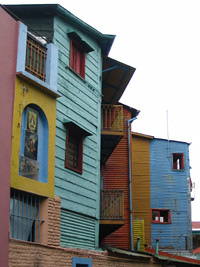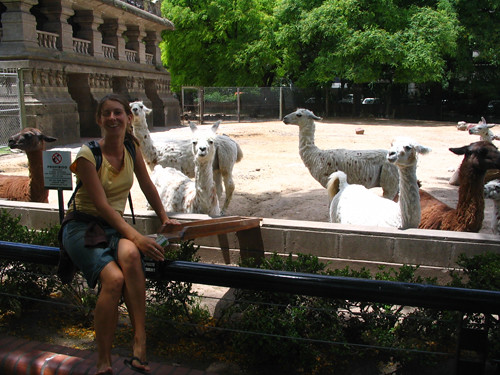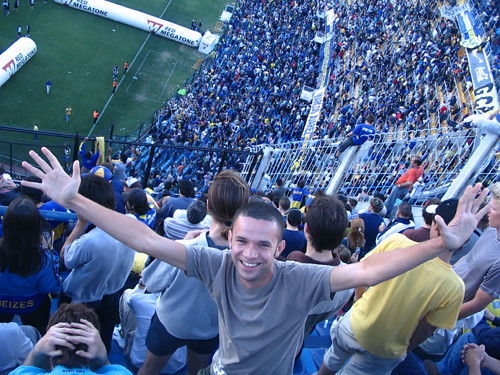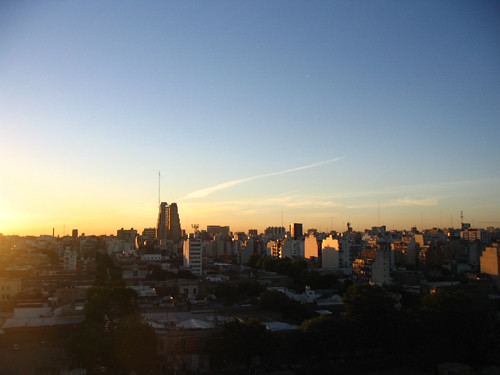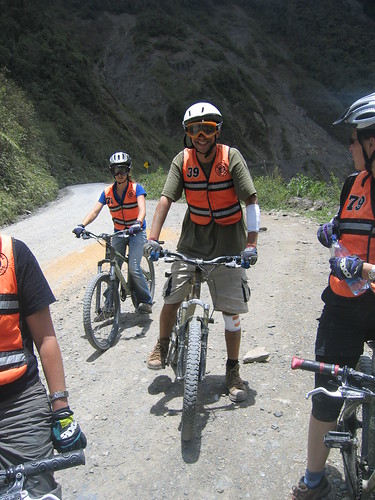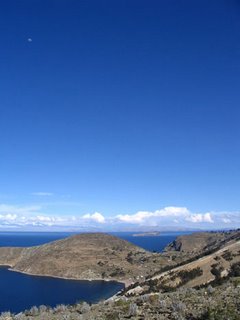I think on the whole Bolivia was probably one of the countries we enjoyed the most although we didn’t see that much of it. It is a very varied and a beautiful country with a rich culture that hasn’t become too commercialised yet. Sadly, it is probably one of the poorest countries we visited, but this made it one of the cheapest to travel in. The salt lakes tour we went on there was through some of the most extraordinary landscapes we have ever seen.
December 26, 2005
A year through Latin America
I think on the whole Bolivia was probably one of the countries we enjoyed the most although we didn’t see that much of it. It is a very varied and a beautiful country with a rich culture that hasn’t become too commercialised yet. Sadly, it is probably one of the poorest countries we visited, but this made it one of the cheapest to travel in. The salt lakes tour we went on there was through some of the most extraordinary landscapes we have ever seen.
December 22, 2005
December 05, 2005
Bolivia and the salt lakes
 You guessed it. I came off on ‘The most dangerous road’, the 45km highway to Corioco. I got a little too cocky after the initial terror in bouncing down the mountain slightly out of control. The guide told us that it is much worse going over the rocks if you ride slowly and I took his advice a little too literally, tailing the pro and a more experienced rider with as much courage as I could muster. I won’t be doing a rider like that again so, wel,l you have to go for it. After two near misses I hit a snaking corner too fast (“Watch out for the white cross by the side of the road,” the guide said, draw your own conclusions as to why it was there) and immediately knew I was hitting terra firma or flying off the cliff. As you can see from the bandages I was left with a few scrapes and not a little blood and limped somewhat more slowly to the end of the road. That said, the ride was spectacular, bombing down the tarmac roads through the mountains at frightening speeds before we hit the rock and dirt roads, a completely different ball game and you quickly realise why these bikes are fitted with suspension and pro gear. We had opted for the hard-tailed bikes and were initially paying the price. The fear stiffens you up and you feel every rock and bump at first until you learn that relaxing and using your arms as suspension is far less painful. After five hours we made it down the slopes for a welcome beer (to calm the nerves) hot shower and buffet at a hotel overlooking a beautiful mountain valley. I have to say we were a little galled to discover that two trucks had fallen from the mountain the night before (we could see logs sprawled down a cliff face) and were rather disturbed on the way up in the rain when we saw a fire crew winching up bodies from the valley floor. Apparently thirty-eight vehicles fell from the road last year. I think everyone was somewhat relieved when we turned into the tarmac roads on the mountain top.With the clock ticking on our return home we have quickened our pace immeasurably; within a matter of days we were at the La Paz station booking a bus to Uyuni and the salt lakes. And while we have been trying to keep up with current events and were aware of numerous demonstrations and road blocks in Bolivia (I understand this has something to do with the distribution and sale of natural gas and how much of this benefits Bolivia) we had unwittingly arrived two weeks prior to a general election. On the way down we had heard
You guessed it. I came off on ‘The most dangerous road’, the 45km highway to Corioco. I got a little too cocky after the initial terror in bouncing down the mountain slightly out of control. The guide told us that it is much worse going over the rocks if you ride slowly and I took his advice a little too literally, tailing the pro and a more experienced rider with as much courage as I could muster. I won’t be doing a rider like that again so, wel,l you have to go for it. After two near misses I hit a snaking corner too fast (“Watch out for the white cross by the side of the road,” the guide said, draw your own conclusions as to why it was there) and immediately knew I was hitting terra firma or flying off the cliff. As you can see from the bandages I was left with a few scrapes and not a little blood and limped somewhat more slowly to the end of the road. That said, the ride was spectacular, bombing down the tarmac roads through the mountains at frightening speeds before we hit the rock and dirt roads, a completely different ball game and you quickly realise why these bikes are fitted with suspension and pro gear. We had opted for the hard-tailed bikes and were initially paying the price. The fear stiffens you up and you feel every rock and bump at first until you learn that relaxing and using your arms as suspension is far less painful. After five hours we made it down the slopes for a welcome beer (to calm the nerves) hot shower and buffet at a hotel overlooking a beautiful mountain valley. I have to say we were a little galled to discover that two trucks had fallen from the mountain the night before (we could see logs sprawled down a cliff face) and were rather disturbed on the way up in the rain when we saw a fire crew winching up bodies from the valley floor. Apparently thirty-eight vehicles fell from the road last year. I think everyone was somewhat relieved when we turned into the tarmac roads on the mountain top.With the clock ticking on our return home we have quickened our pace immeasurably; within a matter of days we were at the La Paz station booking a bus to Uyuni and the salt lakes. And while we have been trying to keep up with current events and were aware of numerous demonstrations and road blocks in Bolivia (I understand this has something to do with the distribution and sale of natural gas and how much of this benefits Bolivia) we had unwittingly arrived two weeks prior to a general election. On the way down we had heard 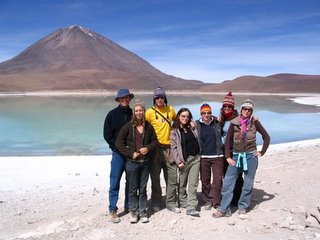 whispers from travellers held up for six days caused by road blocks. After booking our ticket we had to wait four hours before the bus could leave (obviously they don’t tell you about this little hiccup before you buy the ticket) as the roads around La Paz were blocked. When we finally boarded we knew we were in for a real treat courtesy of a speeding, surly bus driver and I had just read foreign office advice that we “…should not attempt to cross road blockades”. Oh well in for a penny.
whispers from travellers held up for six days caused by road blocks. After booking our ticket we had to wait four hours before the bus could leave (obviously they don’t tell you about this little hiccup before you buy the ticket) as the roads around La Paz were blocked. When we finally boarded we knew we were in for a real treat courtesy of a speeding, surly bus driver and I had just read foreign office advice that we “…should not attempt to cross road blockades”. Oh well in for a penny. The driver turned out to be a real gem and found great difficulty in stopping for people to use the loo (why would you need a toilet on an all night bus journey?). After a few of the old ladies stuck the boot in and bent his ear sufficiently (believe me it is pointless to complain if you are a gringo unless you want and earful of rapid-fire, deliberately incomprehensible Spanish), he began driving away when everyone got off the bus for a leak (there was no actual ‘toilet’). Just prior to this we had the driver’s assistant coming around the bus (she showed amazing strength after she grabbed our luggage to load on the bus) asking everyone for money, to bribe the blockade! After a quick stop and the hand over of a few notes we were through and at this point were looking forward to leaving the country (a real shame as it is fabulous). We later discovered one of the windows of the bus had been smashed by a rock thrown by one of younger protestors.
The driver turned out to be a real gem and found great difficulty in stopping for people to use the loo (why would you need a toilet on an all night bus journey?). After a few of the old ladies stuck the boot in and bent his ear sufficiently (believe me it is pointless to complain if you are a gringo unless you want and earful of rapid-fire, deliberately incomprehensible Spanish), he began driving away when everyone got off the bus for a leak (there was no actual ‘toilet’). Just prior to this we had the driver’s assistant coming around the bus (she showed amazing strength after she grabbed our luggage to load on the bus) asking everyone for money, to bribe the blockade! After a quick stop and the hand over of a few notes we were through and at this point were looking forward to leaving the country (a real shame as it is fabulous). We later discovered one of the windows of the bus had been smashed by a rock thrown by one of younger protestors.
Within a day we had arranged for a three day jeep tour of the salt lakes or the Salar de Uyuni, all that remains of a prehistoric sea, which proved to be one of the most dramatic and impressive parts of our entire trip. The first day took us for a stop at the train graveyard at the edge of town, another 20km to the salt-processing village Colchani, a visit to a hotel made from salt and the beginning of the salt lakes. We could already see there was much more in store than just the salt lakes. We were also very fortunate to be stuck in a jeep for three days with some really interesting and enthusiastic people including two Czechs, a Kiwi and two English girls. After this we were whisked for a spot of lunch (llama I believe or probably more likely alpaca) another 60 km to the Isla de Pescado or Fish Island, by virtue of its shape, which is covered in giant cacti. To say this climate harsh is an understatement and it is a real miracle that anything can survive out there. I heard frequent stories of bleeding lips caused by the desert like ecosystem and we all suffered slightly in this respect. Sunglasses were also and absolute necessity if you were expecting to open your eyes. As night rolled in we took refuge in a ‘hotel’ in a small town literally in the middle of nowhere. We had a quick walk around the tumble-weed-wild-west town in search of a whisky saloon. The buildings had low flat roofs with locked, boarded up windows. We saw just two people, one uncommunicative gaucho and a light in the distance. The second day saw is delving into a weird alien cave called Galacticos Magicos alongside the spooky Cemetery of the Chullpas known locally as the Cave of the Devil, a site discovered only three years ago, built around 500 AD by a tribe that typically mummified their dead.
The second day saw is delving into a weird alien cave called Galacticos Magicos alongside the spooky Cemetery of the Chullpas known locally as the Cave of the Devil, a site discovered only three years ago, built around 500 AD by a tribe that typically mummified their dead.
After driving through lava fields and an entire forest of calcified trees chased by howling winds, we stopped off at Bolivia’s only active volcano Ollagüe, standing at 5865m, from which we saw a thin plum of smoke issuing. From here we plunged on across the lofty volcanic ash desert of Pampa Siloli and stopped briefly to have a glance at surreal, sand blasted shapes including the odd Arbol de Piedra or stone tree.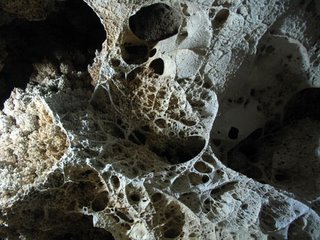 From here, via several green and blue lakes, complete with the requisite pink and white flamingos, we headed to the bloody waters of Laguna Colorada, bizarrely coloured red courtesy of the pigmentation of the algae that live in this mineral lake. Several miles on we saw the sublimely surreal, apocalyptic landscape Salvador Dali chose to paint on canvas.
From here, via several green and blue lakes, complete with the requisite pink and white flamingos, we headed to the bloody waters of Laguna Colorada, bizarrely coloured red courtesy of the pigmentation of the algae that live in this mineral lake. Several miles on we saw the sublimely surreal, apocalyptic landscape Salvador Dali chose to paint on canvas. 
The following morning saw us all up at five for dawn over the laguna with a quick dash to the steam, boiling mud sulphur spectacle that is the Sol de ManÑana geyser at an altitude of some 5000m. We had prepared well for the freezing night previous taking advantage of the cheap market at Uyuni including an alpaca hoodie, gloves, hat and poncho, but nothing could prepare us for this cold morning. Hence is was a great shock to discover we would be taking a plunge the Laguna Polques. I think most of us were in some disbelief as we stripped off in the freezing temperatures, but were relieved that this was indeed a hot spring. Getting back out was something of a reluctant challenge. From here we had one further dramatic, mad dash through the volcanic landscape to the Chilean border. 




November 17, 2005
November 13, 2005
Floating islands, Peru and Isla del Sol, Bolivia
The lost city of the Incas
Arriving on time seems to tempt fate on this continent and it was the same for the train to Machu Pichu. According to the fifty-four minute  rule if you arrive early for any journey here, you will leave at least an hour late. Of course sod’s law is in influence if you arrive dead on time because, of course, the bus, train or plane will have already left. Such as it was for the train in the rain, for more than an hour. The train was standing at the platform while we shivered in the roofless station (the plastic rain macs were just 25p) - there seems to be some kind of elasticity within the Latin American temperament. If you complain about something, quite obviously out of order, somehow or other it seems to make the situation worse. Better to develop some patience and bite the stiff upper lip.
rule if you arrive early for any journey here, you will leave at least an hour late. Of course sod’s law is in influence if you arrive dead on time because, of course, the bus, train or plane will have already left. Such as it was for the train in the rain, for more than an hour. The train was standing at the platform while we shivered in the roofless station (the plastic rain macs were just 25p) - there seems to be some kind of elasticity within the Latin American temperament. If you complain about something, quite obviously out of order, somehow or other it seems to make the situation worse. Better to develop some patience and bite the stiff upper lip.
When we arrived at Agua Calientes (there are thermal baths nearby) an hour or so later we booked into a cheap room ready for the 5am shocker the following morning (We arrived at the ruins at 6am for dawn, before the tourists arrive). Miraculously we all managed to get out of bed and were sipping coca tea to counter the breathless altitude on the way up the mountain and it´s dizzying panoramic views of the ruins. We also climbed the adjacent Huayna Pichu mountain with its lookout tower over the fabled Inca ruin, Wayna Pichu (in the photograph you will see us at the summit after a mad, hair-raising scramble up its steep slopes, perched, with Machu Pichu in the background shrouded in mist and clouds). 
The three hour hike took us through the clouds, up the mountain, down the other side (I am sure this was really mountaineering) down to the majestic Temple of the Moon set in a cave, with what appeared to be a meditation chair hewn from the stone, facing out to the jungle.  Just a few steps further we found
Just a few steps further we found  another temple with alters set into its cave wall, complete with meteorite rocks. Apparently if you place both hands on the space rocks and close your eyes you can vibe with the mountain, the ancient Incas, aliens or anyone else who takes your fancy.
another temple with alters set into its cave wall, complete with meteorite rocks. Apparently if you place both hands on the space rocks and close your eyes you can vibe with the mountain, the ancient Incas, aliens or anyone else who takes your fancy.
November 07, 2005
Nariz Del Diablo, Ecuador

 Beyond the simple border crossing into Ecuador and a short stop at Ibarra, we made our way to Otavalo and supposedly the largest market on the continent. The animal market was quite an experience (Louise wanted to buy a piglet for US$15) and we also found some particularly large cabbages. I have to admit the rest was largely Andean tat, pan pipes (which made me think of Hounslow precinct’s buskers), ‘artisan’ works, and relatively overpriced alpaca ponchos, gloves, socks, hats and the like that seem to be a mainstay for the masses of middle-aged American holiday makers that are drawn to the town. We swiftly hot footed our way past the stalls to the food market where I enjoyed a delicious hog roast for lunch.
Beyond the simple border crossing into Ecuador and a short stop at Ibarra, we made our way to Otavalo and supposedly the largest market on the continent. The animal market was quite an experience (Louise wanted to buy a piglet for US$15) and we also found some particularly large cabbages. I have to admit the rest was largely Andean tat, pan pipes (which made me think of Hounslow precinct’s buskers), ‘artisan’ works, and relatively overpriced alpaca ponchos, gloves, socks, hats and the like that seem to be a mainstay for the masses of middle-aged American holiday makers that are drawn to the town. We swiftly hot footed our way past the stalls to the food market where I enjoyed a delicious hog roast for lunch. 
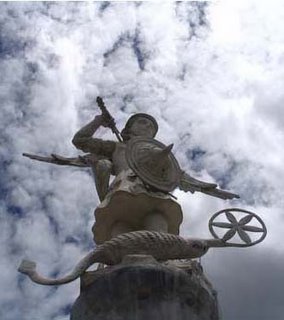
The meat market was a bit of an eyeful with various organs, hooves and slabs of flesh lying around, but I suppose it is a case of waste not want not when you live in a continent that is so obviously shafted by the evils of the global economy. 
Arriving in the capital, Quito, a few days later was, after the initial romantic night time vista of the city’s twinkling lights up the mountain, a distinct disappointment. 
It has to be the most underwhelming city we have come across following its high billing in what we have discovered are the largely unreliable, ill advised and badly researched ‘travel guides’.  The dismal, rainy weather and city attitude rather reminded of drab, second rate London streets in winter, without all the world class cultural events, art and music we come to expect in Europe.
The dismal, rainy weather and city attitude rather reminded of drab, second rate London streets in winter, without all the world class cultural events, art and music we come to expect in Europe.  We were left chasing our tails again as we found the derelict, abandoned and distinctly closed national gallery alongside more predictable Andean street art and more tat (yet more ‘travel guide’ advice). One consolation was that our hostel was very cheap (a recommendation from an American poet we met in Columbia) though we discovered afterwards that rooms, rather darkly, could be rented by the hour.
We were left chasing our tails again as we found the derelict, abandoned and distinctly closed national gallery alongside more predictable Andean street art and more tat (yet more ‘travel guide’ advice). One consolation was that our hostel was very cheap (a recommendation from an American poet we met in Columbia) though we discovered afterwards that rooms, rather darkly, could be rented by the hour. 
Ecuador did brighten eventually. We arrived in Baños, finally with some sunshine, and the town’s wonderful thermal baths set, dramatically, in a volcanic valley surrounded by a mountainous backdrop. Unfortunately, we enjoyed the best of the hot springs, Piscinas de la Virgen, a little too much and forgot to take photographs of the floodlight waterfall tumbling down the adjacent volcano at night time, literally twenty feet from the hot springs.  Heaven after a year of cold ‘showers’ (quite often we have found a shower really is just a stop tap that has been plumbed a little higher than usual), followed by a plunge under an icy shower and a dip in a chilly pool. It was a strange, skin tingling sensation getting back into the hot water, which was at a perfect temperature. On leaving we both felt energised, but afterwards quickly fell asleep, exhausted.
Heaven after a year of cold ‘showers’ (quite often we have found a shower really is just a stop tap that has been plumbed a little higher than usual), followed by a plunge under an icy shower and a dip in a chilly pool. It was a strange, skin tingling sensation getting back into the hot water, which was at a perfect temperature. On leaving we both felt energised, but afterwards quickly fell asleep, exhausted.  Following another day of hot baths we headed for the fabled Nariz del Diablo, the Devil’s Nose Train, described in its programme as ‘The World’s Most Difficult Railway’. Apparently hundreds died during its construction; it plunges down a mountain, then zigzags backwards and forwards down an almost sheer precipice.
Following another day of hot baths we headed for the fabled Nariz del Diablo, the Devil’s Nose Train, described in its programme as ‘The World’s Most Difficult Railway’. Apparently hundreds died during its construction; it plunges down a mountain, then zigzags backwards and forwards down an almost sheer precipice.  We joined the throng of other gringos on the roof of the train at 6.30am to arrive at the foot of the mountain, somewhat windswept, five hours later (the mountain descent itself takes about an hour). We must have travelled through every season taking in our fair share of grey clouds, then ice, blazing sunshine and finally rain on our ascent up the mountain.
We joined the throng of other gringos on the roof of the train at 6.30am to arrive at the foot of the mountain, somewhat windswept, five hours later (the mountain descent itself takes about an hour). We must have travelled through every season taking in our fair share of grey clouds, then ice, blazing sunshine and finally rain on our ascent up the mountain.  I was the only one cracking jokes on the way back up but I managed to garner a few forced smiles from under the sleeping bags, raincoats and whatever bits of plastic sheeting were available. The train ride down the mountain offered a stunning panorama and although we derailed on the way back (I was particularly excited by this but the batteries in the effing camera ran out, I guess I will never make a photographer) it was well worth the effort.
I was the only one cracking jokes on the way back up but I managed to garner a few forced smiles from under the sleeping bags, raincoats and whatever bits of plastic sheeting were available. The train ride down the mountain offered a stunning panorama and although we derailed on the way back (I was particularly excited by this but the batteries in the effing camera ran out, I guess I will never make a photographer) it was well worth the effort.
Following a herculean fifty two hour bus ride (over three days, to make time for our excesses in Columbia) we arrived in Cusco, Peru a few days ago, very, very tired and breathless from the altitude. We are bound for the Machu Pichu by train tomorrow (we have bucked the four day Inca Trail trek, as we run out of time, have seen plenty of miles in the jungle and it seems we might see more - including other ruins in and around the Inca Citadel and the Sacred Valley - before we head to Isla del Sol and lake Titicaca in Bolivia.
